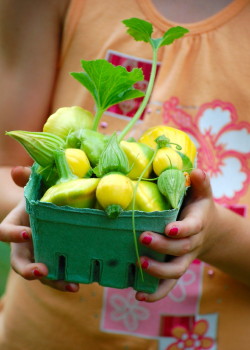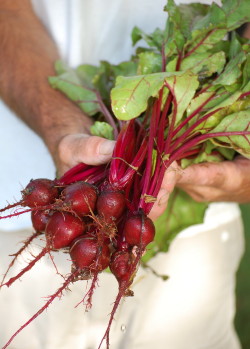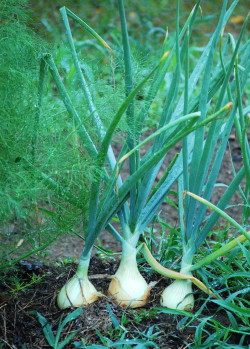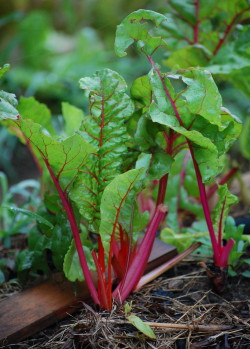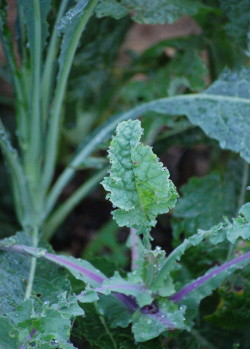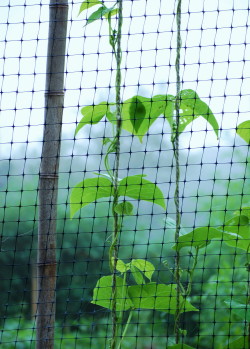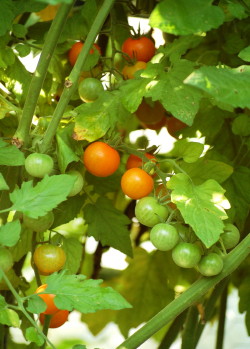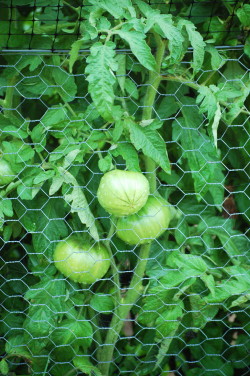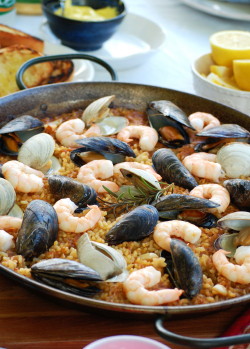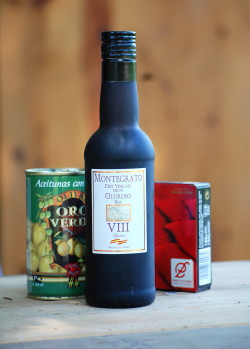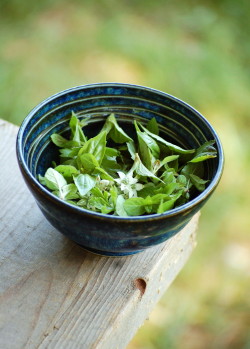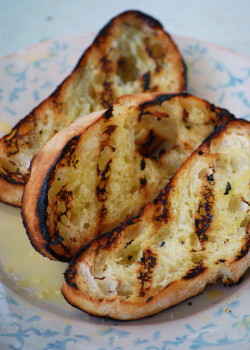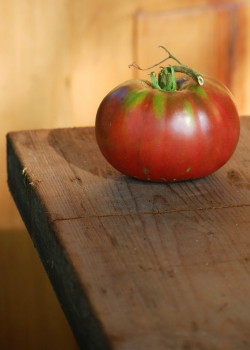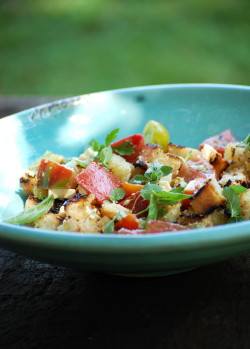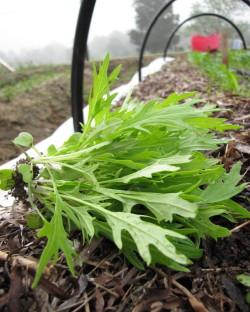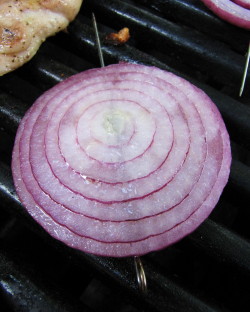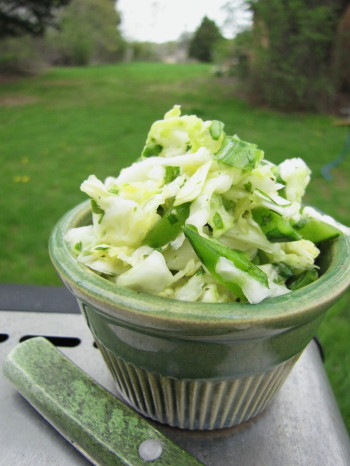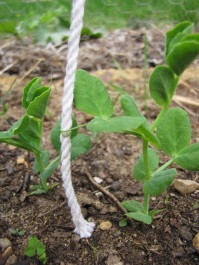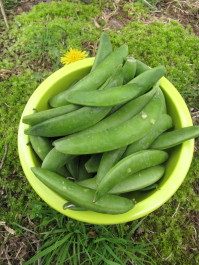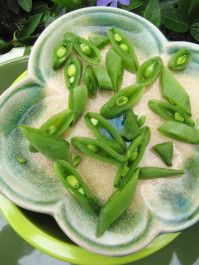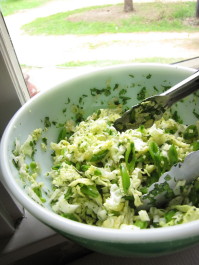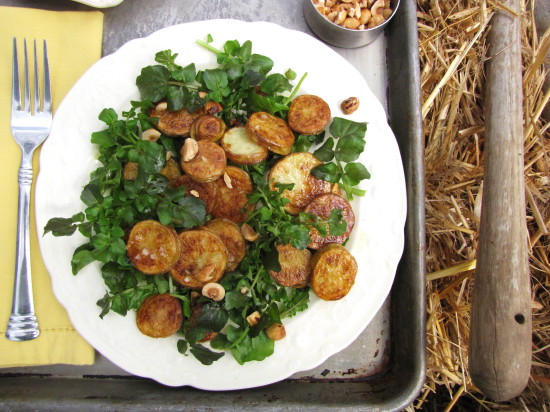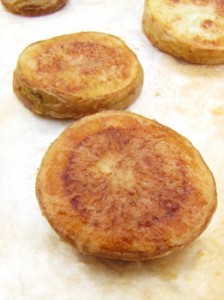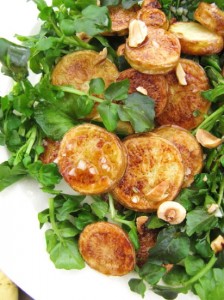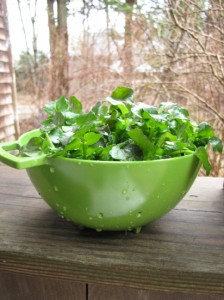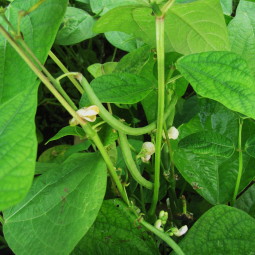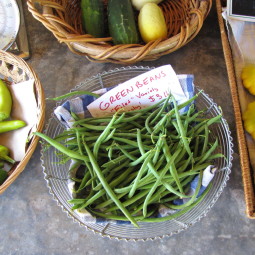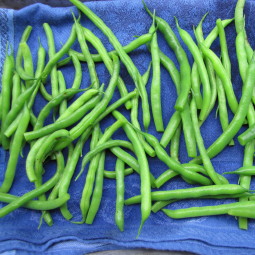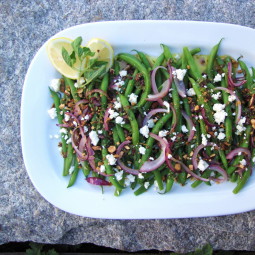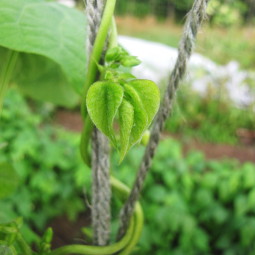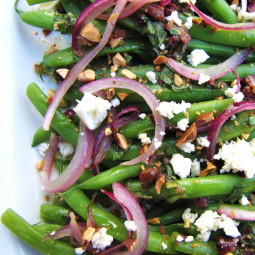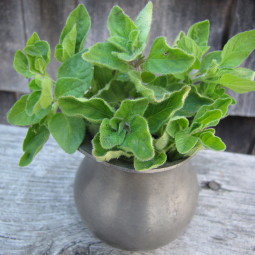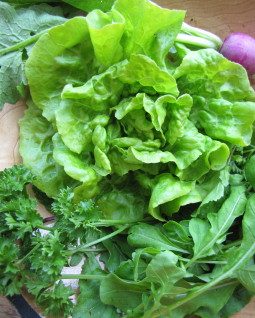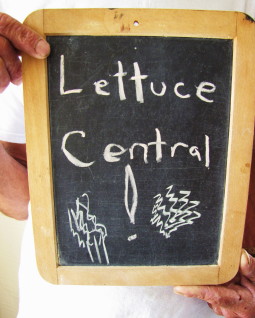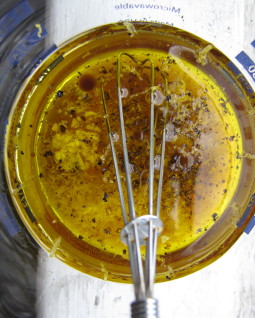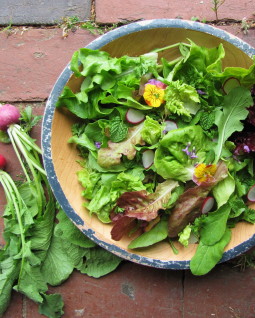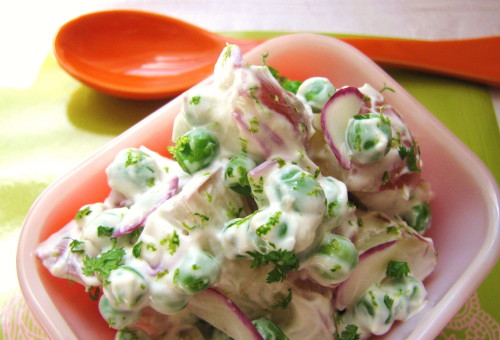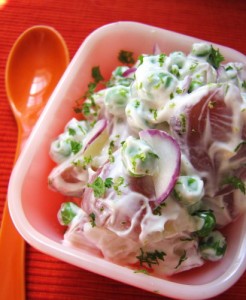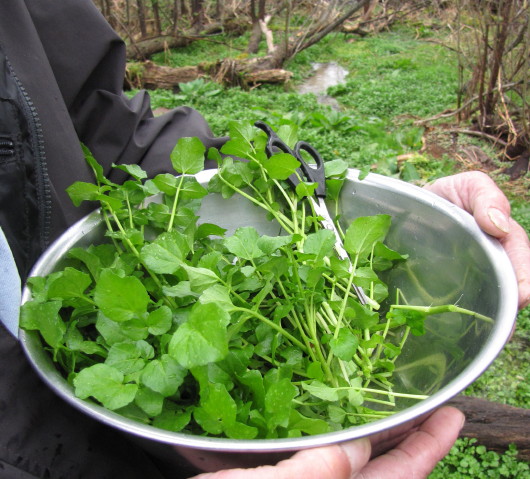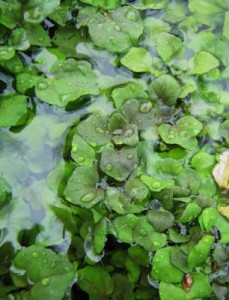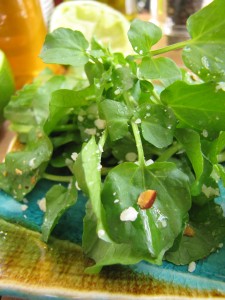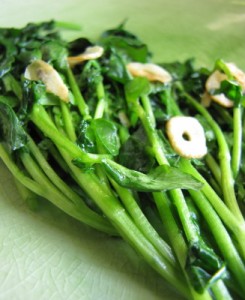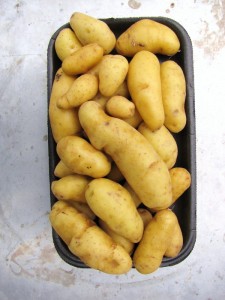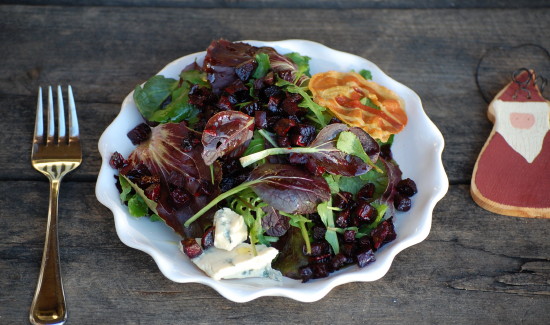 You would think that at some point I’d reach my limit with this whole veggie thing. But it seems I can never get enough. On Saturday I threw Libby and Farmer in the car (this was not hard, as where one goes, so goes the other) and headed off to Whippoorwill Farm. I’d heard a rumor that they were offering their last winter harvest for the CSA to the general public–$20 a share. Oh boy! I remember from belonging to the CSA a few years back that the cabbages and root veggies they provided at the end of the season lasted a good long time in the fridge. And since the only real winter-keepers we’ve got from our garden are onions and rutabagas, the idea of eating those carrots and beets and leeks (my favorite!) in January and February was too enticing for me to ignore.
You would think that at some point I’d reach my limit with this whole veggie thing. But it seems I can never get enough. On Saturday I threw Libby and Farmer in the car (this was not hard, as where one goes, so goes the other) and headed off to Whippoorwill Farm. I’d heard a rumor that they were offering their last winter harvest for the CSA to the general public–$20 a share. Oh boy! I remember from belonging to the CSA a few years back that the cabbages and root veggies they provided at the end of the season lasted a good long time in the fridge. And since the only real winter-keepers we’ve got from our garden are onions and rutabagas, the idea of eating those carrots and beets and leeks (my favorite!) in January and February was too enticing for me to ignore.
 When we got to the farm, Libby took over at the scales, weighing out each pound of carrots, turnips, and beets (we bought a double share, so it was a lot). Then she picked out our bags of lettuce and kale tops while I grabbed the cabbages and leeks. We hadn’t even made it back to the car before we were snacking on the incredibly sweet and crisp carrots. Of course Libby wanted to offer Farmer a carrot, so we broke one into pieces. He had a sniff from his back-seat perch, then proceded to crunch and swallow and lick his lips. Delicious. We ate three more on the way home.
When we got to the farm, Libby took over at the scales, weighing out each pound of carrots, turnips, and beets (we bought a double share, so it was a lot). Then she picked out our bags of lettuce and kale tops while I grabbed the cabbages and leeks. We hadn’t even made it back to the car before we were snacking on the incredibly sweet and crisp carrots. Of course Libby wanted to offer Farmer a carrot, so we broke one into pieces. He had a sniff from his back-seat perch, then proceded to crunch and swallow and lick his lips. Delicious. We ate three more on the way home.
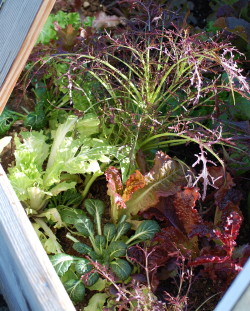
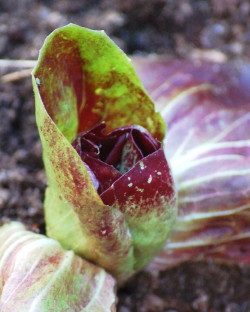 After I sorted and rinsed the veggies and stored them in the new (old) mudroom fridge, I began to think about new ideas for using them. I also have exploding lettuces in the cold frame; the mix of seedlings we planted includes an unusual frilly purple mustard and a deeply handsome red Tat Soi, both of which are thriving. I also am nursing along a couple young heads of radicchio in the cold frame, so all the pretty reds and purples inspired me to make a Christmas-y deep red and green winter salad. (The arugula is also still thriving—outside of the cold frame, no less.)
After I sorted and rinsed the veggies and stored them in the new (old) mudroom fridge, I began to think about new ideas for using them. I also have exploding lettuces in the cold frame; the mix of seedlings we planted includes an unusual frilly purple mustard and a deeply handsome red Tat Soi, both of which are thriving. I also am nursing along a couple young heads of radicchio in the cold frame, so all the pretty reds and purples inspired me to make a Christmas-y deep red and green winter salad. (The arugula is also still thriving—outside of the cold frame, no less.)
I wanted to try a slightly different take on my favorite quick-roasting method for beets, too. While I love roasting them as thin slices, I decided to try tiny dice this time. (The recipe for quick-roasted beet slices is both here and in Fast, Fresh & Green. And while I also included a recipe for tiny roasted roots in Fast, Fresh & Green, I had left beets off the list in that recipe for two reasons—they bleed, and I figured they would take longer than most roots to cook.)
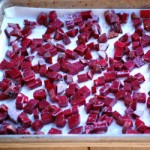
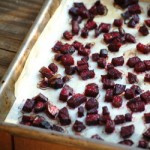 But I was so pleased to discover yesterday that the little diced beets did indeed get tender in 20 minutes at 475 degrees. (So the great news is the same here as it is with the quick-roasted slices: You do not need to invest hours of time to enjoy roasted beets.) With caramelized edges, these sweet little gems made a great addition to the salad—which I rounded out with a creamy blue cheese and a bit of salty pancetta. I forgot the nuts this time around, but would have been happy with chopped toasted pecans or hazelnuts. I used a simple white balsamic vinaigrette with a little maple, but you could improvise your own winter salad with your own dressing and any combination of arugula, endive, radicchio, escarole, mustard, tat soi, or other hearty salad green. Figure about two cups loosely packed greens for each serving, and plate the salads for the nicest presentation, especially if you’re including a creamy cheese (which tends to get messy when tossed). Certainly opt out of the pancetta if you like. Follow the simple recipe below to roast the beets. I think using them on the day they’re roasted is nicest (you can leave them at room temp for a couple hours), but they certainly hold in the fridge, too, and can even be marinated in a citrusy vinaigrette to become more of a condiment or relish.
But I was so pleased to discover yesterday that the little diced beets did indeed get tender in 20 minutes at 475 degrees. (So the great news is the same here as it is with the quick-roasted slices: You do not need to invest hours of time to enjoy roasted beets.) With caramelized edges, these sweet little gems made a great addition to the salad—which I rounded out with a creamy blue cheese and a bit of salty pancetta. I forgot the nuts this time around, but would have been happy with chopped toasted pecans or hazelnuts. I used a simple white balsamic vinaigrette with a little maple, but you could improvise your own winter salad with your own dressing and any combination of arugula, endive, radicchio, escarole, mustard, tat soi, or other hearty salad green. Figure about two cups loosely packed greens for each serving, and plate the salads for the nicest presentation, especially if you’re including a creamy cheese (which tends to get messy when tossed). Certainly opt out of the pancetta if you like. Follow the simple recipe below to roast the beets. I think using them on the day they’re roasted is nicest (you can leave them at room temp for a couple hours), but they certainly hold in the fridge, too, and can even be marinated in a citrusy vinaigrette to become more of a condiment or relish.
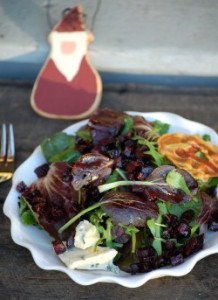 I discovered one other thing yesterday—Farmer likes roasted beets and arugula (in addition to Snickerdoodles). I won’t go into the details on how I learned this, but it has something to do with distracting him from the Christmas tree ornaments.
I discovered one other thing yesterday—Farmer likes roasted beets and arugula (in addition to Snickerdoodles). I won’t go into the details on how I learned this, but it has something to do with distracting him from the Christmas tree ornaments.
Tiny Diced Roasted Beets
Toss these in salads, marinate them to make a condiment or relish, or just plain eat them as a side dish or a snack.
1/2 pound trimmed small red beets (unpeeled)
1 generous tablespoon olive oil
1/4 teaspoon kosher salt
Heat the oven to 475°F. Line a small heavy-duty rimmed baking sheet (also called a quarter sheet pan) with parchment. Cut the beets into dice that are between 1/4-inch and 3/8-inch big. (It’s easiest to slice the beets across first—after discarding the ends—and then lay the slices down to cut into dice.)
Toss the diced beets thoroughly with the olive oil and salt in a small mixing bowl and spread in one layer on the sheet pan. Roast for 20 to 22 minutes, until caramelized and tender when pierced with a knife (they do not have to be soft, just cooked through. Don’t overcook or they will begin to burn.) Let cool a bit on the sheet pan and eat right away—or later!
Makes enough to garnish three or four small salads or two large ones.

